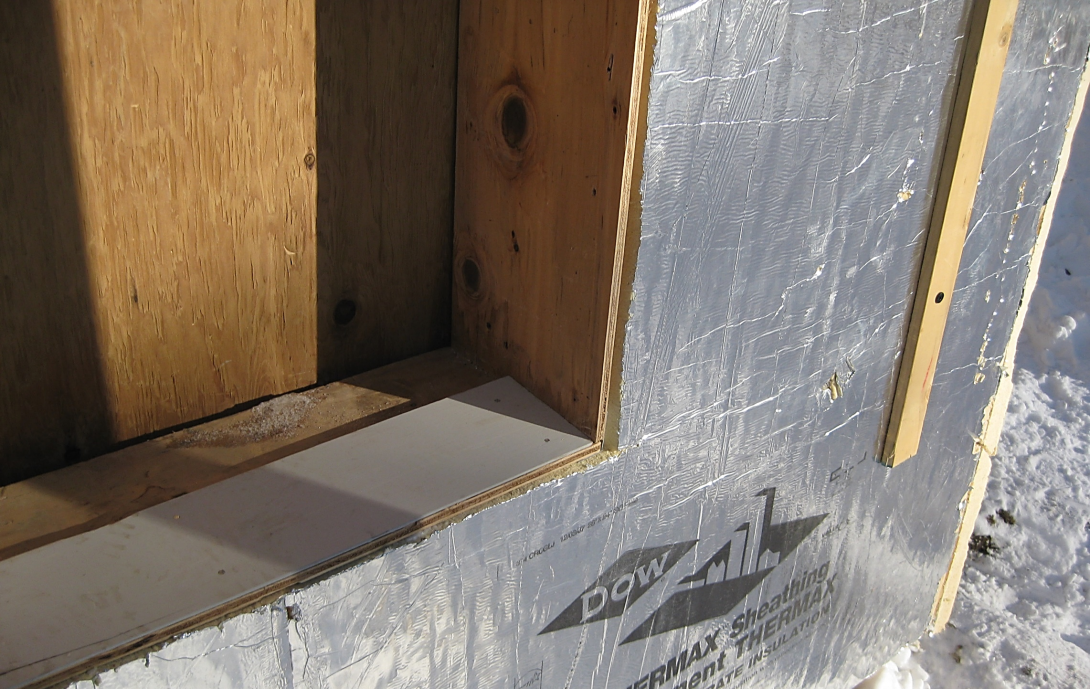
Framing and Windows
Fully Flashed Window and Door Openings: Sill Flashing
Proper window and door flashing includes fully flashing the sill. This involves installing a back dam and self-adhesive flashing at the sill. For pan or sill flashing, use formable flashing, a stretchable self-adhered membrane that bends at corners so one continuous piece can be used to cover the bottom and sides of the sill.
Windows and doors are vulnerable places in the building envelope where moisture and air can penetrate. The sill is an especially vulnerable location. Properly flashing the sill ensures that water is directed away from the window.
There are several steps to fully flashing the sill.
First, install a back dam. This is either a strip of wood or beveled siding nailed along the back (inside) edge of the rough opening (over the flap of housewrap).
Next, cover the back dam with the formable membrane. Begin pressing in the middle of the sill and work toward the sides, removing adhesive covering strips as you go. Make sure to press the membrane tightly into the corners to avoid tears later when the window is installed.
You also can use self-adhered non-elastic membrane for pan flashing, but it must be cut and patched at corners. Two-piece rigid manufactured pan flashing comes with a built-in back dam that must be protected from breakage during window installation. Asphalt-based liquid flashing is applied with a paint brush or roller.